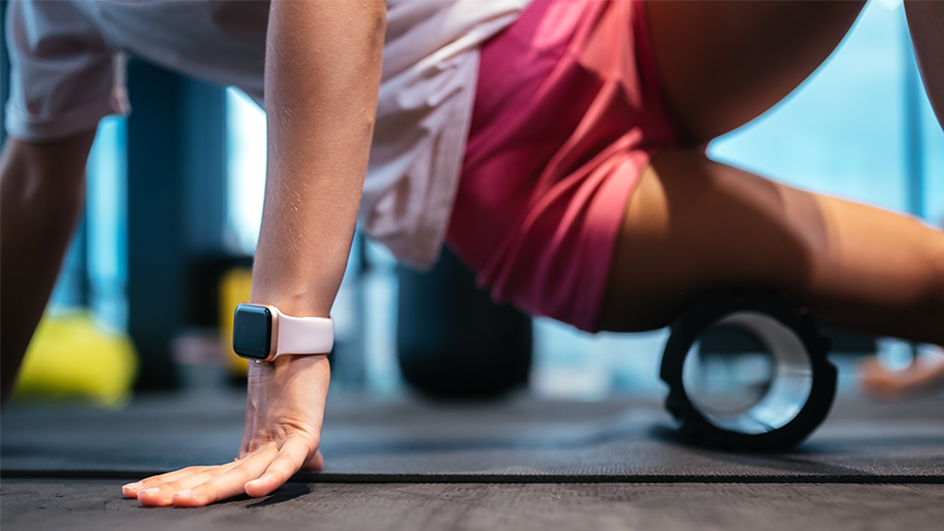
You crushed your workout. Your muscles are feeling it. Now what?
If your answer is “nothing”, then it may be time to rethink your after exercise recovery routine. While there’s no quick fix to skip soreness altogether, the way you recover can make all the difference in how you feel—and how quickly you bounce back.
Why muscle recovery is so important
It may seem counterintuitive, but the real magic of muscle growth happens between workouts—when you're sleeping, resting, and fueling your body with the right nutrients. Exercise creates tiny micro-tears in your muscles, and it’s in the muscle repair process, not the workout itself, that they rebuild stronger.[1]
Skipping recovery doesn’t just mean you’ll be a little extra sore the next day. It can lead to stiffness, fatigue, slower progress, and even injury—especially if you’re new to working out or pushing your routine to the next level.
Recovery after exercise will always include rest. But when you reframe recovery as “active rest,” it becomes an opportunity to actively care for your muscles, replenish your energy, and set yourself up for long-term success.
8 Tips to maximize muscle recovery
If you’re wondering about what helps muscle recovery, we’ve rounded up some of the top tips to maximize your muscle mend.
1. Stay hydrated
Water is the MVP of muscle recovery after a workout. It keeps your joints lubricated and helps your body deliver the nutrients your muscles need to repair.[2] [3] Dehydration can make your post-workout fatigue even worse—so keep that water bottle handy and consider drinking something with electrolytes after an intense sweat session.[4]
2. Prioritize protein & nutrition
Your muscles need fuel to rebuild, and protein is the megastar macronutrient when it comes to muscle repair. Aim for 20-30 grams per meal to help repair tissue.[5]
In general, a well-balanced diet rich in protein, amino acids, vitamins, and minerals plays a crucial role in muscle recovery. These elements help combat fatigue, reduce inflammation, and accelerate the repair process—especially after intense or unaccustomed exercise, when muscle damage may take days to heal.[6]
3. Incorporate stretching
Stretching is a classic response to tight muscles for a reason. Dynamic stretching before a workout can help get your body prepped, while static stretching afterward helps maintain flexibility and prevent stiffness.[7] Stretch therapy can be a safe way to help enhance your range of motion and recovery through guided, expert-designed movements.
4. Use foam rolling or Myofascial Massage
Foam rolling is an easy way to help break up knots and aid in muscle recovery.[8] Roll out sore spots slowly, spending extra time on any tight areas.
For an even deeper level of relief, myofascial massage can help release tension in the connective tissue surrounding your muscles.
[9] This technique can work wonders for tightness, especially in areas that tend to hold stress, like the shoulders, lower back, and hips.5. Get plenty of sleep
Sleep is when the magic happens. While you snooze, your body repairs muscle tissue, balances hormones, and reduces inflammation.[10] Aim for 7–9 hours of quality sleep per night to recover faster and perform better.[11]
6. Consider Massage Therapy & Rapid Tension Relief
Although massages have a reputation as a luxury, they can actually be an essential recovery tool. Massage therapy can help increase blood flow[12], reduce muscle tension, and allow you to move more freely.
A sports injury massage, like a Deep Tissue Massage or a Swedish Massage, can even be a vital tool in your rehabilitation arsenal, helping protein turnover and satellite cell proliferation in recovering muscles.[13]
If you’re looking for even more focused muscle recovery, try adding a Rapid Tension Relief enhancement to your next massage. Your massage therapist can target specific problem areas with percussive massage therapy, which can be a great way to relieve minor muscle soreness.
7. Stay active on recovery days
Sitting still all day? Not the move. Gentle movement—like walking, yoga, or light cycling—helps keep blood flowing, allowing you to recover while in motion.[14]
8. Hot & cold therapy
Both cold therapies (like ice baths or cold packs) and heat therapies (like a sauna or warm bath) help to ease soreness and reduce inflammation in muscles. Some studies show that heat therapy is more effective within 48 hours of your workout and a cold pack over 48 hours post-exercise.[15] For a heated therapy, try hot stone massage. For cooling relief that will last after a massage, try Enhanced Muscle Therapy.
Wrap up your recovery the Massage Envy way
While hydration and proper nutrition can take you far, sometimes your muscles just need a little boost to help sore muscles recover faster. Find a Massage Envy location near you and book your Total Body Stretch or therapeutic massage session today.
Want to make muscle recovery as routine as your workouts? A Massage Envy membership helps you stay on top of your body’s needs and reinforces regular self-care.




